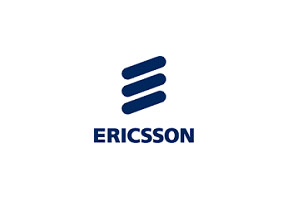Despite the fact that ships carried an estimated total of 9.6 billion tons of cargo in 2013 – around 80 per cent of global trade by volume and over 70 percent of global trade by value – the maritime industry lags behind alternative transport industries in terms of its use of information and communications technology. Ericsson aims to change that with the introduction of Maritime ICT Cloud; an end-to-end offering that combines a managed cloud solution with industry applications, service enablement, connectivity management, and consulting and systems integration services.
At present ships rely on manually updated traffic, cargo, port, weather and safety information that is sent point-to-point rather than made available to all parties simultaneously via a network. This is a time-consuming process and the lack of access to real-time data significantly increases the margin for error.
Ericsson’s Maritime ICT Cloud will connect vessels at sea with shore-based operations, maintenance service providers, customer support centers, fleet/transportation partners, port operations and authorities. At the same time, the offering enables services used to manage fleets, monitor engines and fuel consumption, oversee routes and navigation, and ensure the wellbeing of the crew. Ericsson will provide everything from satellite connections to application support in one complete package, and manage operation of the Maritime ICT Cloud on behalf of its customers.
Orvar Hurtig, head of industry & society at Ericsson, says: “Vessels at sea do have systems in place that allow them to monitor critical functions and fuel usage, set and maintain an optimal course and ensure the welfare of their crew, but they are not particularly well integrated with fleet management systems onshore and they do not maximise the potential of real-time data. As the driving force behind the Networked Society and the world leader in telecommunications, Ericsson is the right partner to help connect these disparate systems and enable them to share information with low latency.”
Maritime ICT Cloud delivers benefits in three main categories: voyage optimisation, cargo monitoring and crew welfare. Fuel is the single biggest expense for any ship owner, and also a major source of emissions that are harmful to the environment. Using engine diagnostics and up-to-the minute information about weather and traffic conditions both at sea and in ports, Maritime ICT Cloud enables ship captains to optimise their voyages to save time, fuel and money while also limiting environmental damage.
By the end of 2014, the largest ships were able to carry 19,000 20-foot equivalent units (TEUs). Keeping track of so much cargo is incredibly challenging, and there is much to be gained from connecting containers wirelessly, monitoring them and making real-time information about their whereabouts and environmental conditions easily available via an integrated dashboard.
As a result of the latest amendments to the Maritime Labour Convention (2006), ship owners are expected to provide broadband connectivity for crew communication, entertainment, training and telemedicine. Maritime ICT Cloud includes a multi-service communication platform with optimised connectivity and bandwidth for different types of traffic. The end results include increased staff satisfaction and retention rates, efficient coaching and development, and increased ability to cope with health crises as they arise by remotely accessing medical information.
Ericsson will highlight Maritime ICT Cloud at CES, which takes place in Las Vegas from January 6 to 9.










